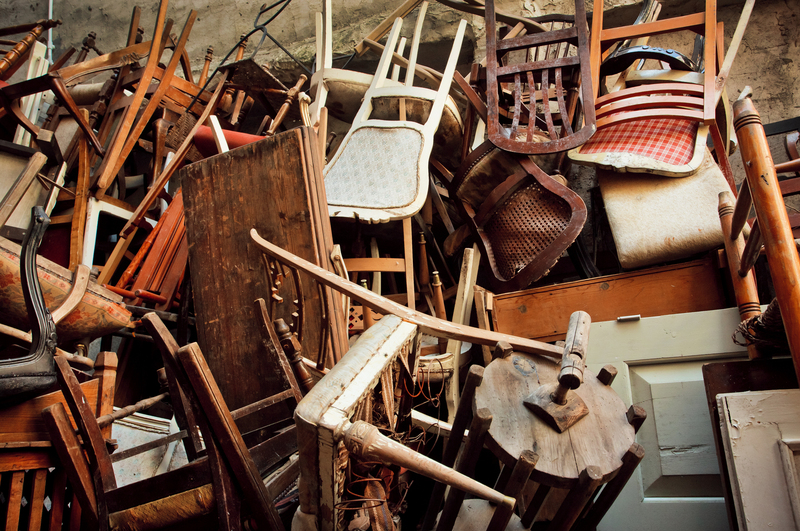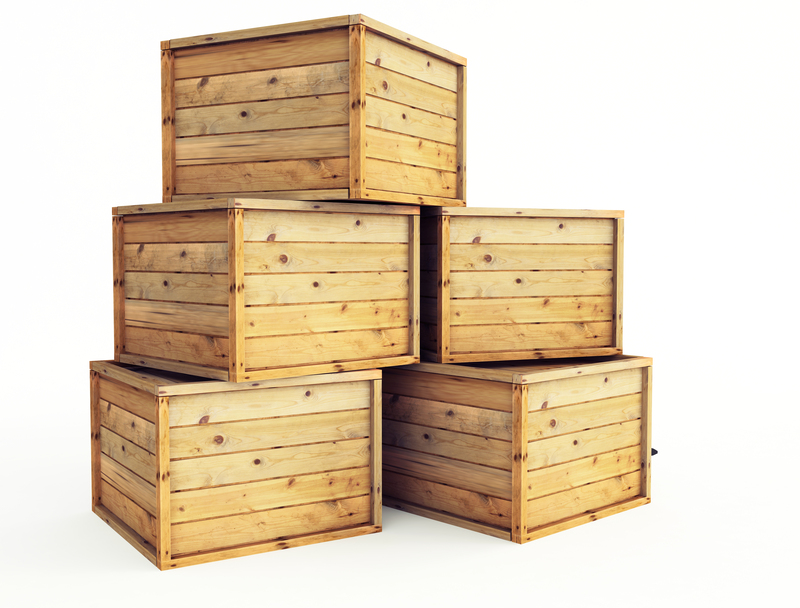Why You Shouldn't Tackle Piano Moving Solo
Posted on 16/06/2025
Why You Shouldn't Tackle Piano Moving Solo
Have you ever wondered if it's possible to move a piano by yourself? While the idea might seem manageable at first glance, moving a piano is a complex and risky endeavor best left to professionals. This article will explain why you shouldn't tackle piano moving solo, detailing the dangers, costs, and hidden complications of DIY piano relocation.

Understanding the Unique Challenges of Piano Moving
At first sight, pianos may look sturdy and manageable, but their internal and external structures make them particularly challenging to move. Before you attempt solo piano moving, consider these complications:
- Enormous weight: Upright pianos easily weigh between 300 and 800 pounds; grand pianos can weigh over 1,200 pounds.
- Bulky, irregular shapes: Pianos are not just massive; they have awkward shapes with delicate external finishes and protruding legs and pedals.
- Sensitive inner mechanisms: Thousands of finely-tuned parts exist inside, including hammers, strings, and keys, which can be easily damaged.
- Unwieldy size: Pianos often don't fit through standard doorways or staircases without careful disassembly and navigation.
The Hidden Dangers of Moving a Piano Alone
One of the main reasons you shouldn't move a piano by yourself is the serious risk of injury or property damage. Here's why:
- Physical Harm: Lifting such immense weight can result in back injuries, strained muscles, broken bones, or even life-threatening accidents if the piano tips or falls.
- Property Damage: Fond of your hardwood floors or elegant staircase? Improper piano handling can lead to scratched floors, dented walls, or broken banisters.
- Piano Damage: Even a minor slip can knock your piano out of tune or break irreplaceable, expensive components.
- Financial Costs: Replacing or repairing a damaged piano--or property--can far exceed the cost of hiring professional piano movers.
Case Studies: When DIY Piano Moves Go Wrong
Consider these common disasters experienced by DIY movers:
- Slip and fall accidents: Unfamiliar with proper lifting and movement techniques, many have dropped pianos causing severe injuries and irreversible instrument damage.
- Uneven staircases: Navigating stairs singlehandedly often leads to smashed wall corners, gouged steps, and broken piano legs.
- Lack of equipment: Without special dollies, straps, and padding, pianos are far more likely to be dented, scratched, or dropped.
- Emotional stress: The pressure of managing logistics, worrying about damaging your cherished instrument, and coordinating complex maneuvers can lead to extreme stress and regret.
The True Complexity of Piano Moving
It's tempting to believe muscle and determination alone can suffice, but safe piano moving requires specialized skills:
Professional Training
Expert piano movers know how to disassemble legs, pedals, and even whole actions if needed. They understand how to brace, lift, and maneuver pianos without compromising their intricate construction.
Proper Equipment
Amateurs rarely possess the necessary equipment. To prevent damage and injury, professionals use:
- Piano dollies that distribute weight and roll smoothly across floors
- Heavy-duty straps and moving blankets to secure and protect the instrument
- Custom ramps for navigating stairs or loading vehicles
Insurance & Liability Protection
When hiring a reputable piano mover, your property and piano are protected by insurance. If an accident occurs, you're not financially liable. When going solo, any mishap comes out of your pocket.
Piano Tuning and Regulation After the Move
Professional movers know that pianos require retuning--and sometimes regulation--after a move, especially if the process is jarring. Amateurs may improperly reassemble parts, making it harder (or impossible) for technicians to service the instrument.
Why DIY Piano Moves Usually Cost More
Many attempt do-it-yourself piano moving to save money. But let's break down the hidden costs:
- Truck and equipment rental: Renting a truck, ramps, dollies, and padding quickly adds up.
- Injury expenses: Medical bills from related accidents are often substantial.
- Repair costs: Damages to paint, keys, or mechanism frequently require costly professional attention.
- Time and effort: The time spent planning, moving, and cleaning up could be better spent making music or relaxing.
Studies show the total bill for a bungled DIY move almost always exceeds the cost of a professional piano mover. Add the value of your safety and peace of mind, and the equation becomes obvious.
The Benefits of Hiring Professional Piano Movers
1. Safety and Peace of Mind
Professional piano moving services employ crews trained specifically to mitigate risk. Their skills keep your loved ones, property, and the instrument itself safe--eliminating anxiety.
2. Specialized Techniques for Every Type of Piano
Piano pros handle uprights, baby grands, and concert grands. They know the best way to navigate tight turns, narrow doorways, and tricky stairs. Their experience ensures a smooth, efficient process.
3. Full Insurance Coverage
When you hire insured piano movers, you skip the risk of property or instrument loss, because accidental damages--though rare--are fully covered.
4. Prolonged Piano Lifespan
Properly moved pianos suffer less damage to their tuning, action, and cases, meaning your investment lasts longer and requires fewer costly repairs or tunings.
5. Time-Efficiency
Moves take a fraction of the time when handled by pros--save yourself hours or even days of backbreaking labor.

Expert Tips: What to Expect from a Professional Piano Move
- Initial Assessment: Movers survey your home and the instrument to determine needed equipment, headcount, and logistics.
- Disassembly (if needed): Legs, pedals, and music stands may be carefully removed and labeled.
- Padding and Wrapping: Movers wrap every surface to prevent scratches and knocks.
- Safe Transport: The crew uses braces, dollies, and ramps to load the piano smoothly--not lifting more than necessary and avoiding tipping.
- Placement and Reassembly: At its new home, the piano is set up precisely and checked for stability.
- Aftercare: Pro movers will often recommend a follow-up tuning, sometimes including it as part of the service.
Conclusion: Protect Your Piano--And Yourself
When weighing why you shouldn't move a piano solo, consider the physical hazards, potential for damage, and hidden expenses. The safest and most cost-effective strategy is clear: Hire experienced piano movers. They bring the equipment, skills, and peace of mind needed to preserve both your piano and your wellbeing.
Whether your piano is a treasured family heirloom or a major investment, remember: risking it by going DIY simply isn't worth it. Trust the professionals to safeguard your music and your home.
Frequently Asked Questions on Solo Piano Moving
- Can I move a piano upstairs without professionals?
Moving a piano up or down stairs requires multiple experienced hands, proper equipment, and sophisticated techniques. Attempting this alone is extremely hazardous for both you and your piano. - How many people does it take to move a piano?
Typically, at least 3-5 trained movers are required, depending on piano size and logistical complexity. - Are there different methods to move upright versus grand pianos?
Yes. Each piano type has unique requirements for disassembly, padding, and transport. Professional movers are trained for both. - Does a piano need tuning after moving?
Even with expert handling, pianos often go out of tune due to temperature and humidity shifts during a move. Schedule professional tuning after relocation for optimal sound.
In summary: Don't risk your safety, your home, or your treasured instrument. Choose professional piano movers for a secure, seamless, and stress-free move every time.







